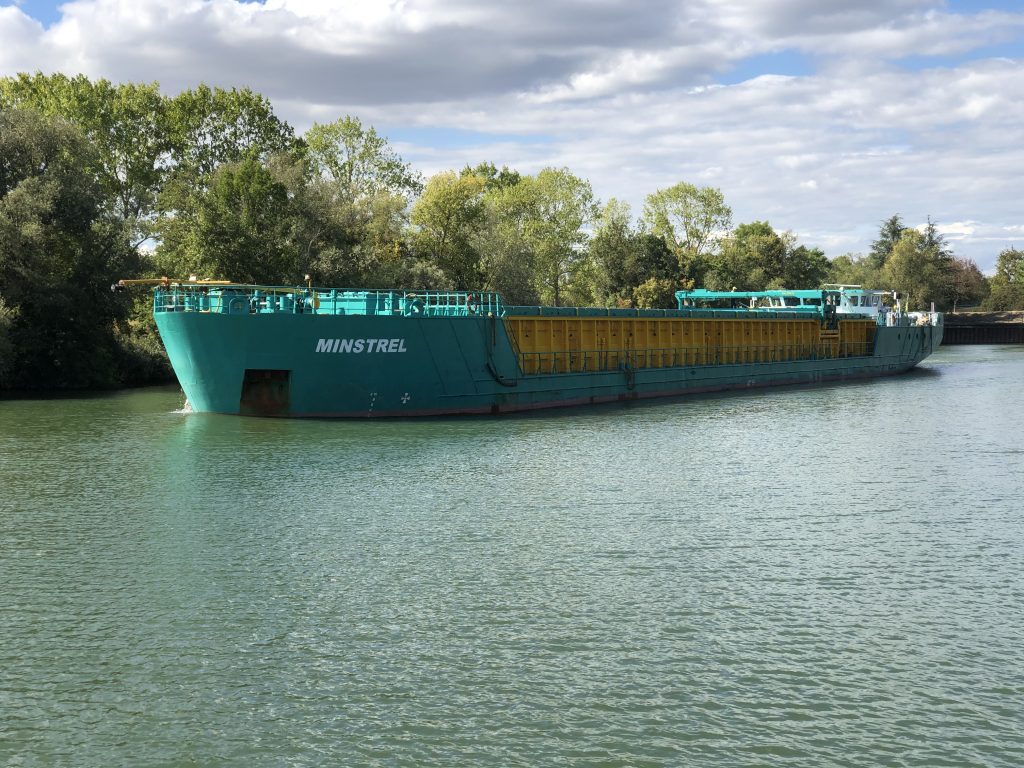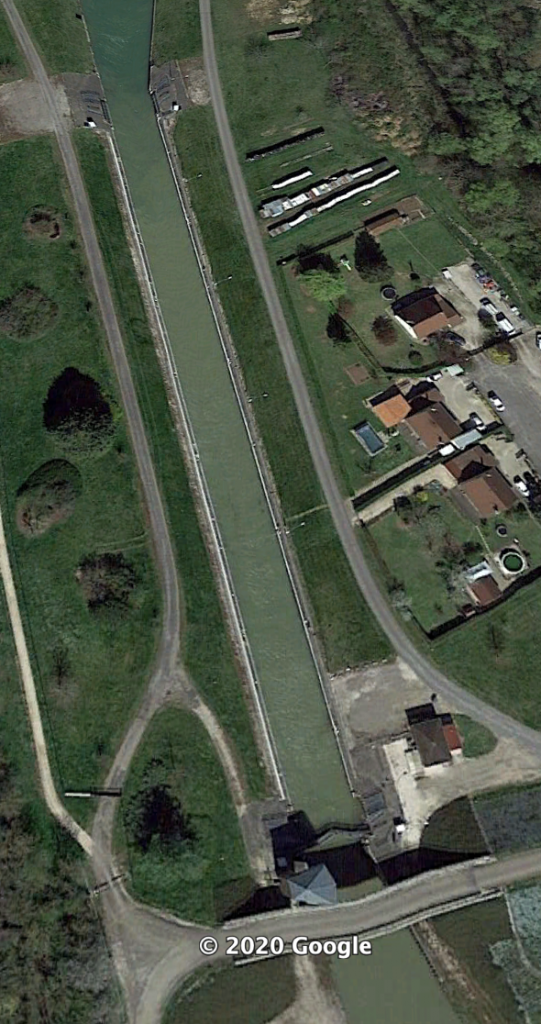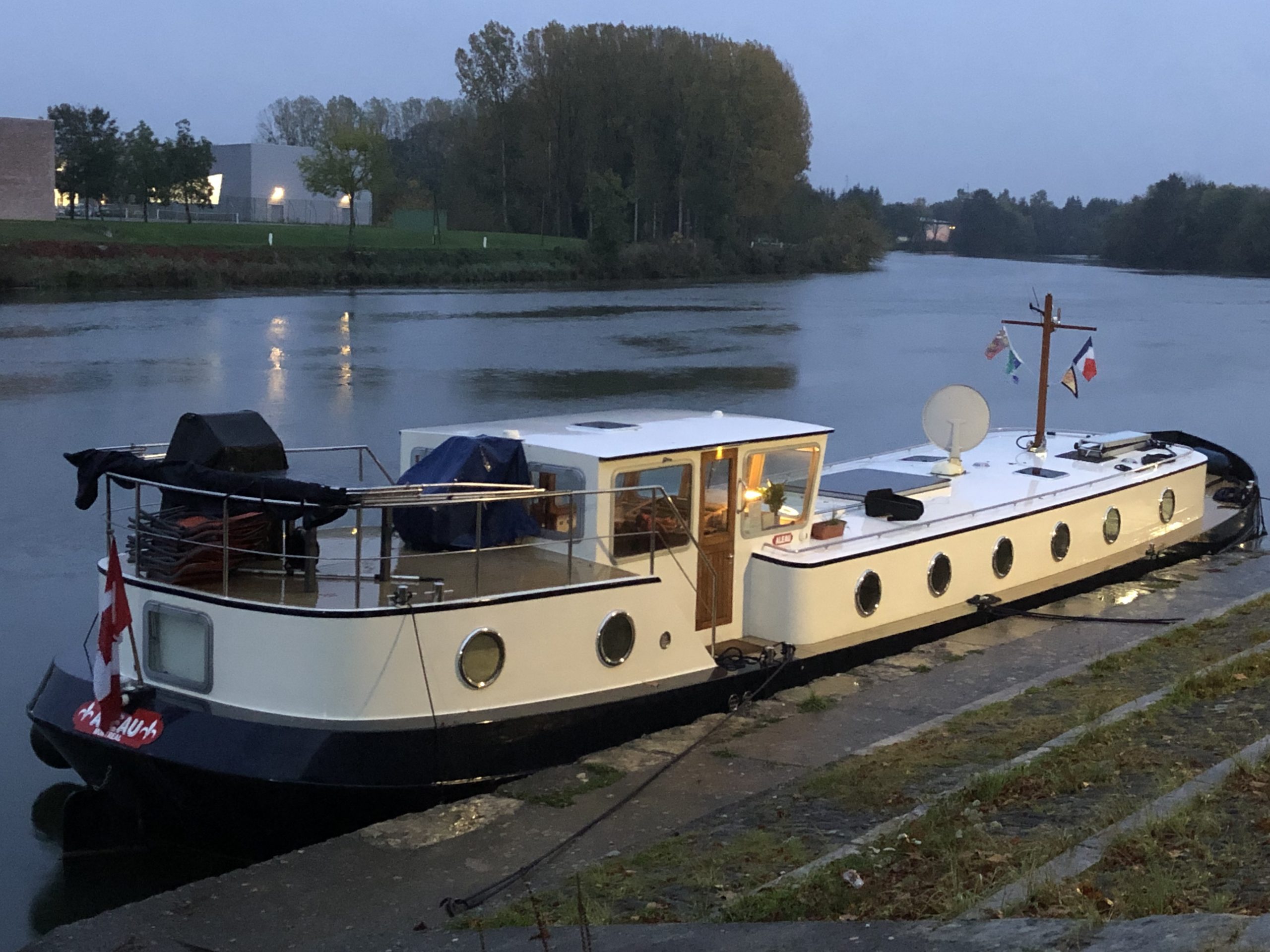With our fuel tanks full and with the ailing engine-start batteries replaced, it was time to do what we had been waiting to do – to finally get out on the water and cruise. Chapters 42 through 48 describe our travels last summer north on the Saône from Auxonne to Soing. This time, we were heading south. It would be our first time on the Saône south of St. Jean-de-Losne. It is a different river. In fact, the name changes. We had been on “la Petite Saône.” Not really small – especially compared to a canal – but la Petite Saône has (relatively) small locks and virtually no commercial traffic. It didn’t take long before we were sharing the waterway with “commercials.” Here, the Saône is wide and there was no difficulty.

The locks on the Canal de Bourgogne (See Chap. 19) are what are known as Freycinet locks – named after France’s Minister of Public works who, in 1879, decreed that all locks should be a standard size – 39.0-metres long, 5.2-metres wide, and 2.2-metres deep. This allowed for 300-tonne barges to travel throughout France. But it wasn’t long before bigger barges – and bigger locks were needed.
Our first lock south of St. Jean-de-Losne was not a Freycinet. It was a whopping 185-metres long, 12-metres wide, and 3.5-metres deep. It is operated by a VNF official in a control tower. We communicate via our VHF radio. We were too busy to take photos. The two below are stolen from Google. Every time a boat passes through this lock, almost 8-million litres of water are lost. Because of the drought – and even though we were on a river and not a canal – the VNF limited the use of the lock to once per hour. Of course, we arrived just past the top of the hour and had to wait. But we were in no hurry.


